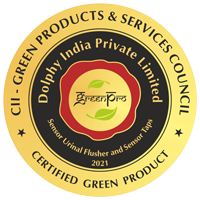How Urban Cleanup Is Changing Due to Smart Dustbins?

Smart Dustbins
A smart bin is an intelligent garbage or recycling container that can track its level in real time thanks to connectivity. When the smart bins are full, an alarm is sent to the janitor via communication between the bins and them. A baseline for recycling and garbage management is established with the aid of the data gathered from the smart bins. Teams working on sustainability may start with this baseline to create waste reduction plans and track their progress.
Over the past ten years, a variety of cutting-edge technologies have been developed to enhance and streamline municipal infrastructure, contributing to the growth of the smart city. With a focus on energy, transportation, and internet connectivity, among other systems, they strive to improve accessibility for all residents in metropolitan regions.

The ultimate goal of a smart recycling bin is to reduce the amount of garbage that ends up in landfills. It is a creative and technologically sophisticated take on a regular waste container. It has a number of sensors, communication options, and data analytics tools to help with recycling and trash management. They are intended to improve the sustainability, convenience, and efficiency of the garbage collection and recycling process for both consumers and companies. You can also buy Tissue Paper Dispenser for your Office or Hotel from Dolphy.
Features of A Smart Recycling Bin
There is a basic set of components that transforms a regular garbage can into a smart bin, even if different smart bins provide different functionality. We go over these essential elements in further detail below.
Sensors
Bins with sensors are able to determine how full a container is. Waste management teams may improve collection routes and reduce unnecessary collections by using this information, which is frequently remotely communicated via WiFI or Bluetooth. It's possible for cameras and other sensors to identify the kind of garbage going into the trash can. Sensor based urinal sensor flusher from Dolphy would be a great purchase.
Connectivity
The Internet of Things (IoT) is connected to smart bins, allowing for real-time communication between the bins, trash management personnel, and central control systems. Data gathering and analysis are also made possible by this connectivity.
Data Analytics
To find patterns and trends, the data gathered from the smart bins—such as fill levels, trash kinds, and location—can be evaluated. Making educated judgments on resource allocation, recycling initiatives, and garbage collection schedules can be aided by this knowledge.
Advantages of Smart Dustbin
More rubbish is processed before it reaches recycling facilities because to the many advantages that smart waste bins have over traditional waste management techniques. The following are a few advantages:
Efficient Waste Collection
Current garbage collection techniques frequently have set timetables or routes, which can result in pointless travel and resource waste. By continually monitoring fill levels and providing trash management operators with real-time data, smart bins with fill-level sensors and Internet of Things connection have the potential to upend this method of garbage management. You can visit Dolphy as we also have sensor installed smart dustbin online with latest facility.
Data-Based Perspectives
Beyond merely simplifying collection routes, the data gathered by smart garbage bins provides a wealth of information for better waste management tactics and supports evidence-based decision-making. Garbage management teams may learn a great deal about community and individual habits by examining patterns and trends in garbage creation and disposal.
Behavioral Change
The potential of smart garbage bins to change individual behavior is one of its most interesting effects. Users are more likely to adopt responsible waste disposal practices when they see that their actions directly impact the fill levels of bins and the success of waste collection.
Cost Savings
Reduced labor costs, fewer trips, and cheaper fuel costs are all results of optimized collection routes, which may save money for any waste management team or business. Additionally, extra expenses related to cleanup and maintenance can be minimized by avoiding overflow and littering. These cost reductions are consistent with more general sustainability objectives, since effective resource use lessens the environmental impact of the waste management sector, promoting sustainability and responsibility.
Smart Bins: Considering the Future
Smart bins are already loaded with the newest technology, but new developments in technology seem certain to take the idea much farther. Smart bins with AI operating systems installed in the future should be able to clean, sort, and crush garbage of all kinds more effectively since the gadget will be able to actively learn. Better data analytics will also provide a better knowledge of trash creation, which will help consumers and organizations find solutions to cut down on and get rid of needless waste. Also check out our latest blog on Guide to choosing the Best Toilet Paper in the World.
.png)








